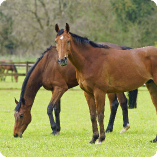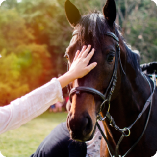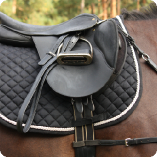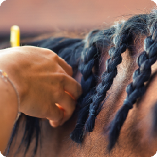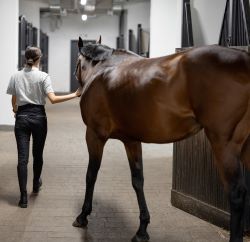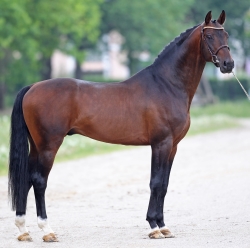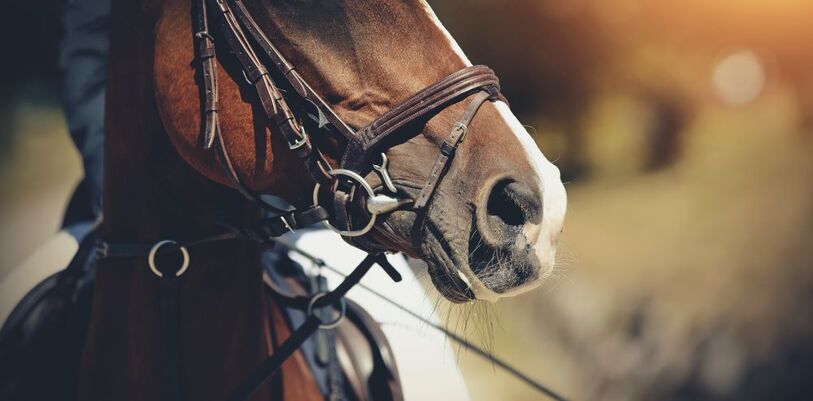Your Brain Can't Tell The Difference Between What's Real And What's Imagined - A Guide To Using Imagery In Your Training
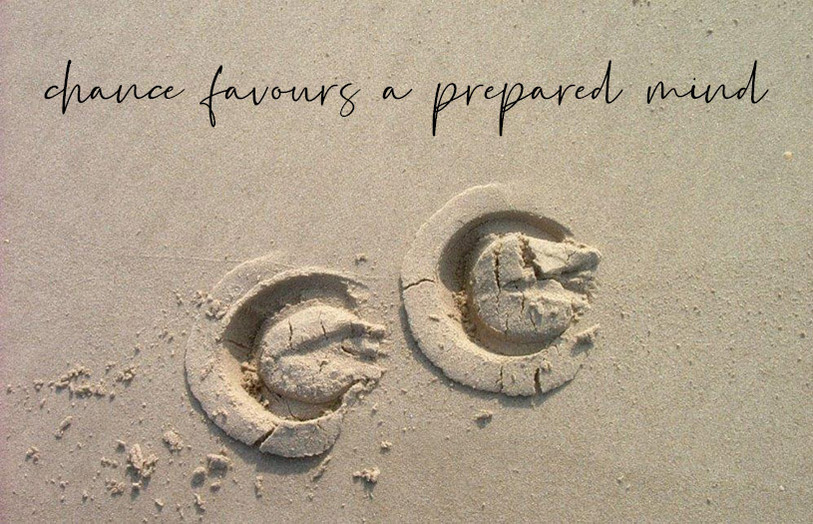
Research has shown that when an individual engages in vivid and absorbing imagery the brain interprets this as identical to the event happening. In other words, the brain can’t tell the difference between what is real and what is imagined. What this means for us as riders is that we don’t have to ride 10 horses a day, have access to high level school masters or daily coaching to improve our riding. Those 10,000 hours that the experts say we need to do to reach excellence – well some of them can be done in our head!

Imagery involves using all our senses to create or recreate an experience in the mind. It allows riders to practise skills and strategies without physically being on a horse or in the training environment. It can be used by beginners and experienced riders alike to enhance physical and psychological skills.
How does imagery work?
A simple exercise to demonstrate the power of imagery can be done either mounted or dismounted. Stand with one arm out to the side at shoulder height. Take your arm back behind you, twisting at the waist but without moving from the spot. Go as far round with your arm as you can and note a point that marks this position e.g. a tree, a fence post, a car.
Now return to the starting position, close your eyes and visualise your arm going back to the tree or fence post you noted. Now visualise it going further round to the next fence post, tree or other marker.
Open your eyes and repeat the exercise again aiming to take you arm as far round as possible without moving from the spot. This time you will be able to take your arm further round and reach the spot you visualised. Repeat this several more times picking points further and further round. See how much you can increase the range that your arm can travel.
Using imagery to learn sport skills:
-
 Beginners or novices can use imagery with cue words to improve their riding technique. Images such as a piece of elastic attached to the top of your riding hat, combined with the words “grow tall” will help you to sit more upright.
Beginners or novices can use imagery with cue words to improve their riding technique. Images such as a piece of elastic attached to the top of your riding hat, combined with the words “grow tall” will help you to sit more upright. - Any new skill can be practised first in the mind before trying on the horse. It helps if you know how it should feel from riding a school master but if not make sure you have a clear understanding of what is required to perform the skill (i.e. the aids) and practise this in your head.
- When learning how to half pass, go through in your mind where you are going to put your inside hand, your outside hand, your inside leg, your outside leg, your weight. Practise the entire sequence from bringing your horse round the corner, adjusting your position, asking for the movement and feeling your horse’s bend, movement with the front legs, movement with the back legs and then finishing the half pass. Do this on both reins.
Using imagery to practise sport skills:
- Using imagery to practise a specific skill repetitively in the mind helps to avoid us “drilling” our horses in order for us to get it right.
- Cross country riders might use the image of riding down a tunnel to practise jumping narrow or off set combinations. Lucinda Green uses the image of squeezing toothpaste from the tube with your legs to encourage riders to think forward and out through the reins when riding to a fence.
Using imagery to practise strategies:
- If you know your horse tends to jump left over drop fences, back off going into water, spook at banners in the arena or nap at the arena exit, you can use imagery to rehearse how you are going to deal with it. If this situation then does occur, for instance when you are at a competition, your body will be prepared to act on autopilot to correct it.

Using imagery to problem solve:
- If you are experiencing problems with your riding it can be helpful to use imagery to think through various options, predicting how your horse might react to each and which would provide the best solution. Often, by relaxing the mind and imagining the situation you can gain a clearer insight into the problem and its possible resolution.
Using imagery to enhance psychological skills:
- By re-imagining all the preparation you have put in and previous good performances, you can increase your levels of confidence and reduce your levels of anxiety.
- Practise with different relaxation techniques for when you start to feel stressed. These might include visualising yourself on a peaceful hack in the countryside or on a beach relaxing in the sun. You might find it more effective to incorporate breathing with your images. As you breathe in see yourself taking in relaxation and as you breathe out see yourself breathing out tension. Alternatively you might find symbolic images more powerful, such as a twisted rope uncoiling or a block of ice melting.
- If something hasn’t gone well or you feel you could have ridden better then imagery can be used to “put it right”. Run through a positive version of the round or test by correcting the mistake or successfully negotiating the jump. Think of this as recording over the poor performance in your mind and replacing it with a successful performance.
To make imagery work for you follow these simple guidelines:
- Like any skill, imagery needs practicing. Aim for at least 5 minutes daily.
- Use all your senses to improve the vividness and include emotion (how you are feeling or how you want to feel).
- Use both internal and external perspective. See yourself doing the course or test as if watching on a video and then see it through your own eyes as if you are riding it.
- Use imagery in both practise and competition.
- Use cue words to facilitate imagery “look up”, “sit tall” etc
- Emphasise dynamic kinaesthetic imagery, that is the feel of actually executing the movement in real time.
- Keep a log of useful imagery routines and words.
Remember - Chance favours a prepared mind and daydreaming incubates creative discovery (Daniel Goleman - Focus: The Hidden Driver of Excellence)
Really that’s all imagery is – preparing your mind and focused day dreaming! I don’t know about you but I could happily spend most of my time out of the saddle thinking about being back in it!
Illustrations courtesy of Steph Tranter - https://www.facebook.com/stephtranterart
The author of this article, Alison Lincoln, is a writer, coach and freelance groom. To find out more about her and her coaching work, please visit her website > https://www.alisonlincoln.co.uk/

